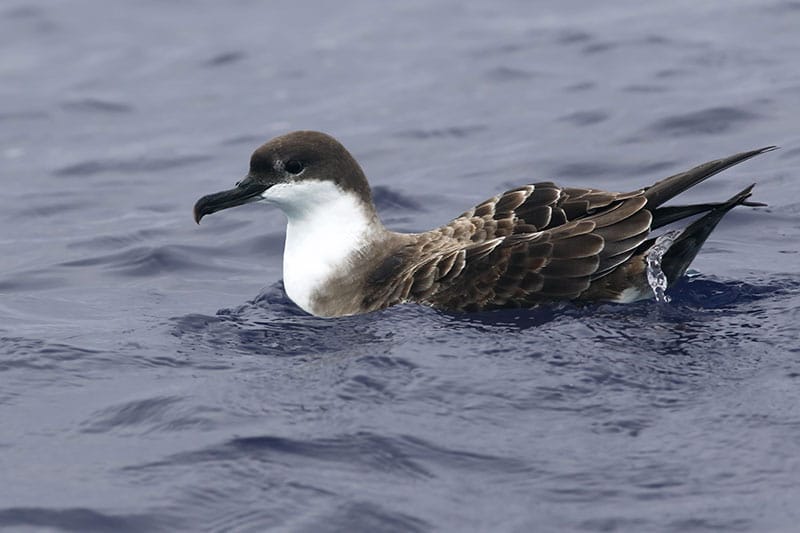Main Menu

The colour of a bird’s plumage serves many different purposes, playing an important role in survival, reproduction, and behaviour. Brightly coloured feathers often act as a signal to attract a mate, while feather colour can also be used for social signalling and establishing hierarchy within a group. Plumage colour also helps with camouflage, allowing birds to blend into their surroundings, and it can aid in thermoregulation, helping birds manage their body temperature in different environments.
Seabirds are a diverse group of species that have evolved to live in marine environments. They belong to a wide range of families, including gannets and boobies, shearwaters and petrels, auks, murres, puffins, and penguins. Some ducks, skuas, cormorants, gulls, terns, and skimmers are also classified as seabirds. However, other birds that frequent saltwater habitats, such as herons, grebes, divers, and waders, are not considered true seabirds.
Many seabirds share common characteristics. They tend to have longer lifespans, breed later, and produce fewer offspring than other birds, but they invest significant time and resources into raising their young. Most nest in large colonies, ranging from a few dozen individuals to over a million, and many undertake extensive annual migrations. Some seabirds spend almost their entire lives at sea, only coming inland to breed, while others inhabit coastal areas but may occasionally be found in unexpected inland locations if they are blown off course by strong winds.
Physically, seabirds also exhibit several shared adaptations to their marine lifestyle. Except for cormorants, they have waterproof feathers that are denser than those of land birds, helping to keep them warm and preventing them from becoming waterlogged. They also possess specialised glands that enable them to excrete excess salt, allowing them to drink seawater and consume salty prey without issue.
Another distinctive trait among seabirds is their relatively subdued plumage. Unlike the bright colours often seen in land birds, seabirds typically display black, white, or various shades of grey. Any bright colouring is usually limited to their bare parts, such as their bills, legs, and feet.
Several theories have been proposed to explain why seabirds are predominantly black and white.
Most scientists agree that the primary reason is camouflage. Much like battleships painted grey to blend into the ocean, the dark upperparts of seabirds help reduce their visibility from above, making it harder for predators to spot them against the sea. Their white underparts may also make them less noticeable to prey when viewed from below against the bright sky, serving as a form of “hunting camouflage”,
To test this theory, Frank Götmark from the University of Gothenburg in Sweden conducted an experiment using black-headed gulls. He filled an indoor pool with common bleak, a small, freshwater schooling fish, and allowed the gulls to hunt them. To investigate the effect of colouration, he dyed the undersides of five gulls black and compared their hunting success to a control group of five gulls that remained naturally white.
The results from his experiment showed that the gulls with black underparts captured prey at a significant lower rate than the white-bellied gulls. This difference was observed both when the birds hunted alone and in flocks. For black gulls hunting in flocks, the reduced success was mainly due to a lower success rate per attack, whereas for black gulls hunting alone, it seemed to be caused by a decrease in the number of attacks they initiated.
These findings support the idea that white underparts provide a hunting advantage, reinforcing the theory that seabird colouration plays a key role in both predator avoidance (defence) and prey capture (attack).
However, in 2021, a team of evolutionary scientists from Ghent University in Belgium, set out to investigate whether seabird colouration serves a purpose beyond camouflage, focusing on seabirds’ wings that are usually either countershaded (dark on top and light underneath) or entirely black.
Previous studies on aircraft wings (aerofoils) had shown that heating a wing’s surface can affect flight performance by altering the balance between lift and drag. However, these studies varied widely in wing shapes, airflow conditions, and extreme surface temperatures, making it unclear whether the same effect occurs in birds. The researchers wanted to find out whether seabirds experience a similar benefit when their dark wings absorb sunlight and heat up.
To explore this, they first analysed the evolution of over 300 seabirds including albatrosses, frigatebirds, and tropicbirds and discovered that species with better gliding ability, meaning they lose altitude more slowly, tend to have darker wings. This suggests that wing colouration may play a role in improving flight.
Next, they conducted wind tunnel experiments using two wings from northern gannets. To prepare the wings, they removed the muscles and flesh, replacing them with cotton to maintain their shape. One wing came from an adult gannet, which had white feathers with black tips, while the other was from a juvenile gannet, which was mostly dark.
The researchers mounted the wings on a force balance to measure the forces acting on them. They also placed infrared light bulbs in the wind tunnel to simulate sunlight, mimicking a bird flying under the sun. To test the impact of pigmentation on flight efficiency, they altered the wings’ colours, lightening the dark wing and darkening the light one.
As expected, the dark wing heated up more under the light bulbs, but when comparing heated and non-heated wings, they found that the heated wing was 20% more efficient. These results suggest that the prevalence of dark and countershaded wings in seabirds may, at least in part, be an adaptation to enhance flight performance in oceanic conditions.